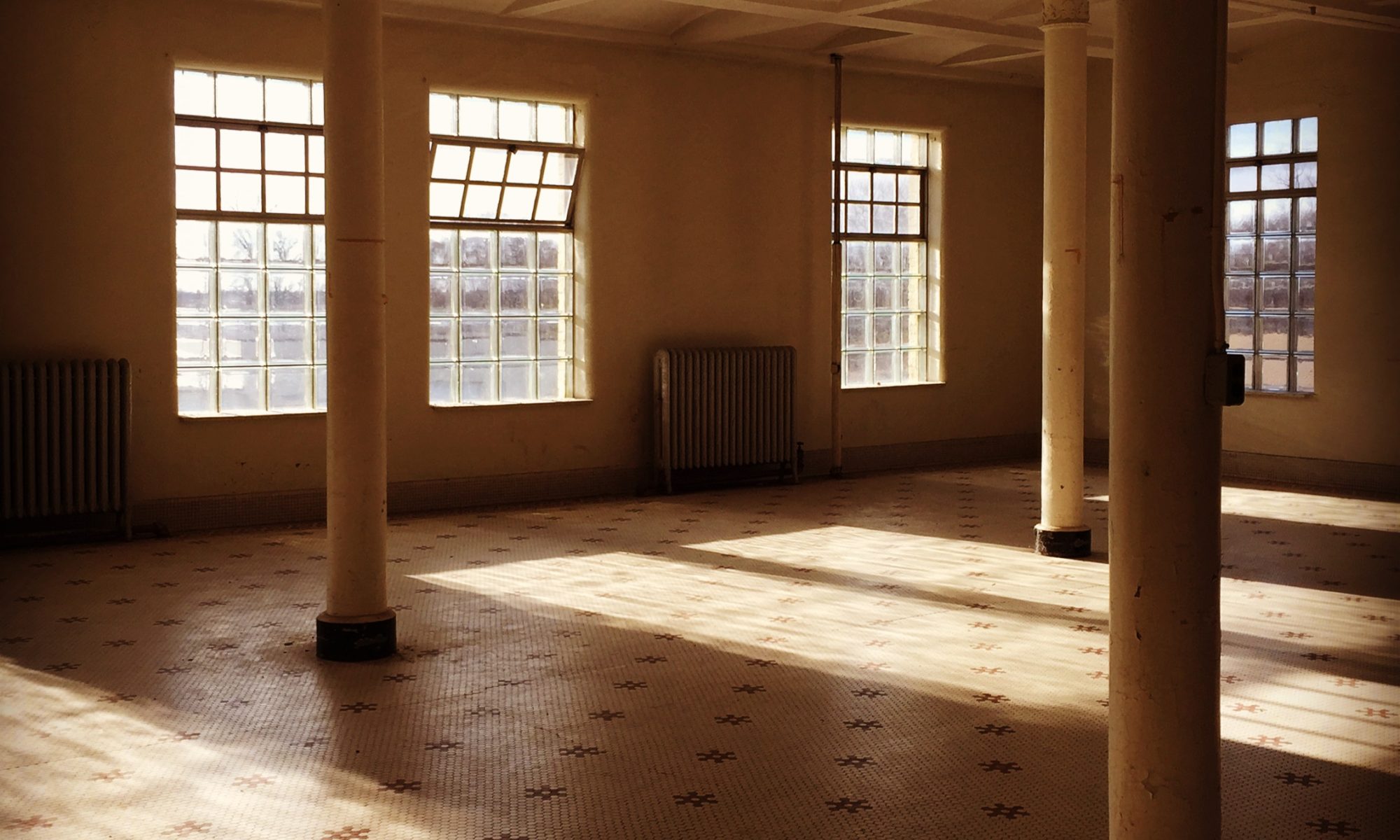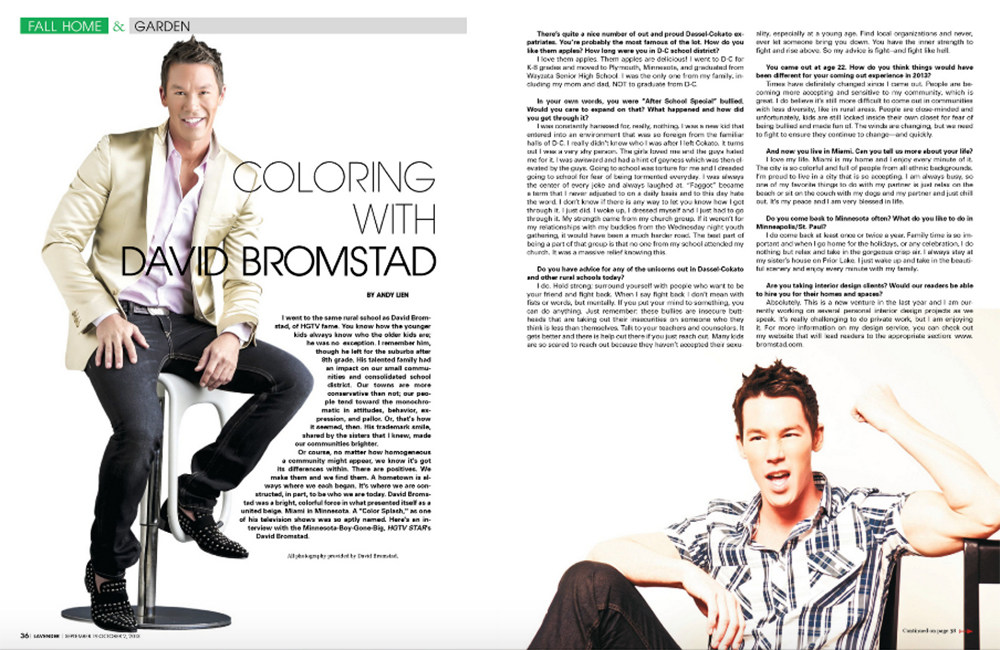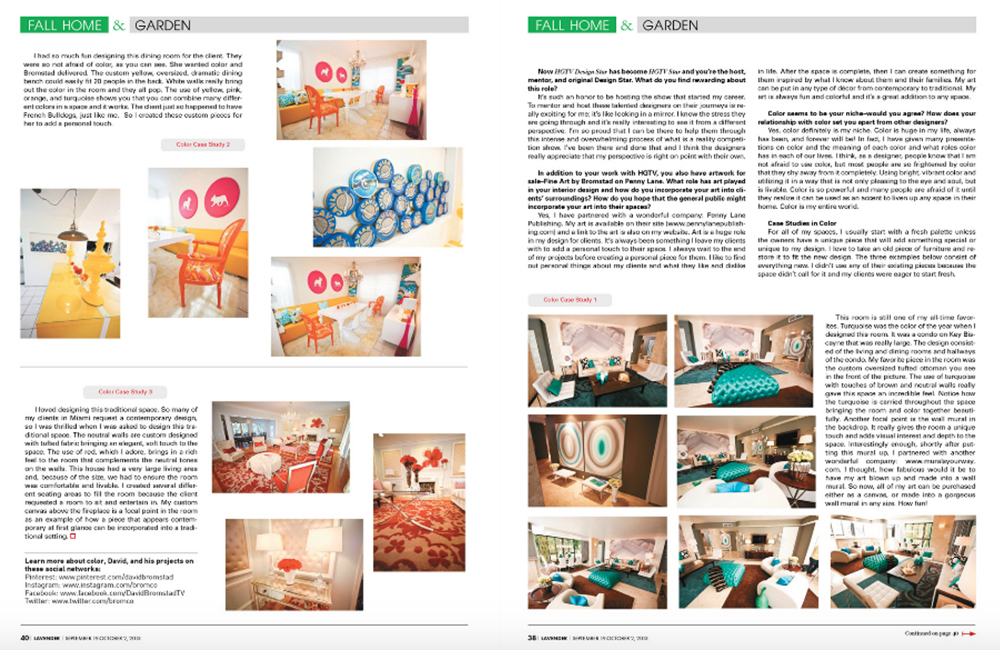“As with any Cirque show, you can let your imagination run wild. That’s why there’s no story line or words that are given out so that each individual that comes can be taken and transported into their own individual journey.”
Mark Pawsey, Artistic Director of Amaluna
The big top is in a parking lot in Denver. In the daylight, it looks similar to how it will appear when Cirque du Soleil puts its tent pegs into the asphalt at the Mall of America. A blue-and-yellow striped tented oasis in a stretch of black hardtop. I’ve been to Cirque shows in different locales: the Target Center, the Mall of America, Lowertown St. Paul, and, my favorite, the Sculpture Garden at the Walker Art Center. When the blue-and-yellow delight was tucked into the Sculpture Garden near the 394/94 interchange in Minneapolis near the likes of the Basilica and the Cherry and Spoon, Minneapolis seemed more like an urban Wonderland than ever. Regardless of where it is, there is always magic within.
Like circuses of yore, Cirque du Soleil finds a blank canvas, sets up camp, and then departs without leaving a trace. One day it will be here, one day it will be gone. In their sophistication, sometimes they even leave a space better than how they found it; it’s part of their agreement. If they had to remove something, they put it back. If they had to repave something, they leave the new pavement. For most of us, they leave only memories and mementos; regardless, they leave us better than they found us.
Walking into the tent, the air becomes different. On a hot day, it becomes cooler. Light takes on a different value of color and consistency. It smells of popcorn. It’s the staging area for showtime. Earlier in the day, I went behind the scenes at Cirque du Soleil and visited the different areas of the multiple tents. It was a bit like walking through a church when it’s empty and dark; everything was set in its place and people were quietly going about their preparations for performing the rituals and sacraments of Amaluna. I didn’t want to bump or touch anything and thought that speaking in a low hush seemed appropriate as I tried to stay out of the way of the performers who were rehearsing and the crew that was literally setting the stage for the show. But no such reverence was required. As an outsider looking behind the curtain, I was welcomed and shown a community that is serious and playful, one that is full of professionals from as many as 18 countries.
Cirque du Soleil and its people are as much of an ideal community as some of the dream worlds it shows us. Welcoming, with an “anything goes in the circus” kind of attitude, Cirque isn’t flippant about its diversity, but it’s more of a non-issue than anything. People are from different countries; people have different shades of skin; people cover the whole spectrum of sexuality. Being a Canadian company, Cirque’s employees have the benefit of Canada’s years of marriage equality for same-sex couples. It’s a dream that is becoming our reality, our future, here in the United States and Minnesota. Knowing that the arts community as a worldwide group has been more progressive in social issues for the GLBT community is one thing; seeing it as a way of life in Cirque du Soleil makes the whole Amaluna experience even more enriching.
Back in the big top as I wait for the show to begin, a peacock sits in my lap. The spotlight finds us and she waves to the rest of the crowd from where she sits on me, her perch. Around us are some of the nearly 2500 people who fill the circular seating under the big top in which every seat is a good one. We are surrounding the stage that is circular, but actually extends all the way up to the top of the tent. Cirque du Soleil includes aerial acts and uses as much of its own space as possible in the tent shows—something that I value more than the arena shows where the action is all on a one-sided stage. Performers use the tent and its high-tech poles and pulleys as well as its audience, particularly in the time before the show begins. Looking up at the source of some commotion, there is Cali, the half-human, half-lizard character perched high on a pole, throwing popcorn at people as they take their seats. Something as simple as a one-sided food fight warms up the crowd for what is to come: art, athleticism, music, and motion with comedy and playfulness infused throughout.
The story of Amaluna is based on The Tempest by William Shakespeare. Seated in the big top, with or without a peacock on the lap, the set and imagery leaves much to our imagination. Mine took me further into Greek mythology and lore as well as into my own childhood’s pop culture. As I’d read about the show, the story of an island of Amazon women reminded me of Sappho from the Island of Lesbos, not to mention Diana’s Paradise Island in Wonder Woman. But, as the story unfolded, it was definitely on-theme with Shakespeare’s story, as far as the characters and events were concerned. A mother (Prospera instead of Prospero) with a daughter (Miranda) live on an island. There is a storm (assisted by the spirits, Arielles), there is the addition of a love interest for Miranda (Romeo instead of Ferdinand), and there is an impish character (Cali instead of Caliban). But, central and above much else, is Amaluna, which symbolizes the most significant departure from The Tempest: the women.

Amaluna is the name of the mysterious island where this story unfolds. It means “mother moon,” something that is visually enforced as often as Prospera—the mother, the queen, the sorceress—flies through the air with the Moon Goddess. At times in the story, her visibility is more obvious than others, but the roles of both the moon and Prospera are ever-present. The Tempest had one primary female character in Prospero’s daughter, Miranda. Amaluna’s cast is over 70% female, something that is not only a departure for Shakespeare (which often had men playing the roles of women), but for Cirque du Soleil as well. It’s a coming-of-age story for Miranda. The Amazons are female gymnasts. The clowns—who are more “clowning” than acting as traditional “clowns”—are actually a same-sex couple, thanks to cross-dressing. The sailors-turned-castaways and Romeo are young and strapping men, something which is just as pleasing as the fact that the show is so female-rich. Most remarkable, for the first time in Cirque du Soleil’s history, the band of musicians is composed entirely of women (and directed by a “Lavender leader”). Music is as central to Cirque du Soleil’s productions as the stories, the performers, the costumes, and the acts. It creates as much of a setting as the stage and tent do. To intentionally carry the prominence of female characters and themes to the music is significant and superb.
Amaluna starts with a darkened stage. A single piece of fabric is swept by wind into the air, lit so that it glows. The music starts low and rises with the throaty alto voice of Prospera, establishing her as a strong and prominent force in the story. We are introduced to many of the characters on the island of Amaluna and then quickly thrown into the storm, “The Tempest,” which is largely depicted through music and reminded me of “Smooth Criminal” by David Garrett or 2Cellos. I’d been told that the music of Amaluna was reminiscent of that of Coldplay, but I heard so much more than that, throughout. At times, it was Florence + the Machine. When the Balance Goddess performs her hypnotizing act (that can’t be described in words adequately), I heard shades of Sweet Honey & the Rock and Bobby McFerrin. Prospera performs with a cello in a number of pieces, so my rock-cello-loving self was very pleased. A shredding guitarist reminded me of Prince in her long purple coat and charismatic musicality, while another had the edge of tattooist Kat Von D. There are moments of Enya and stretches of Marilyn Manson. Hand-drumming and driving percussion bring the music back to more of a tribal feel, especially while the Amazons perform. A few times, I swear I heard Led Zeppelin’s Robert Plant being channeled by the lead singer of the band. I make these comparisons not to make the Amaluna music sound as if it’s not original or authentic, but to show just how varied and diverse it is, much like its cast and audience.
Visually, Amaluna is a masterpiece. The correlation of a performer to his/her surroundings, costume, and make-up constructs a whole vision made of so many separate works of art. Each cast member applies his or her make-up to the specs that are required for their character. There are airbrushed tattoos for some of the musicians and Valkyries while Miranda and Romeo must wear cosmetics that can withstand the waterbowl. Wigs and colored contact lenses and jewel-toned hair stripes and face shadings show the audience that they are in the presence of more than mere mortals. As I sit and take in the performance, each act’s change in tone and timbre is accompanied by a shift in vision, carried out by the numerous costumes and props of each character. From the washable leather pieces to the swimwear to the lightweight peacock plumage to the softening denim to the scales of the lizards, each inch of each costume is optimized for beauty and movement.
What amazes me with each and every Cirque du Soleil show I see is the flawless execution of what seem to be impossible acts of talent and athleticism. This show is no exception. Valkyries and Wind Gods dance through the air on aerial straps. Acrobats spin watermeteors and each other showing off Icarian Games. Amazon gymnasts soar from uneven bar to uneven bar. Castaway men launch and land on the teeterboard. Cali juggles orbs with grace and skill. Lovers swim in the 6000-pound waterbowl. Romeo stops just short of certain death on the Chinese pole. The Peacock Goddess (on this issue’s cover) dances with grace and caprice. With a seemingly random pile of sticks, the Balance Goddess takes our collective breath away. All of the acts, though more numerous than mentioned here, pull together the story of Prospera, Miranda, and Romeo on the Island of Amaluna, and will surely thrill the audience, time after time.

I was on my feet in an instant at the end of the show. Without question, I can say that this is my favorite Cirque du Soleil production. It will thrill first-timers. For those who have already experienced Cirque du Soleil, it will be an exquisite departure from some of the recent touring shows we’ve seen here in Minneapolis. It’s different and it helps us to dream. As Artistic Director, Mark Pawsey, said:
“This is the joy of Cirque du Soleil. There really is no right or wrong. It’s what everybody’s individual journey is within the story. 2500 different people will have a different emotional reaction and a different emotional journey. When you give people joy to feel and they feel it together, it’s fantastic. If we do our job properly, we’re connecting the 46 artists we have to ignite the people in the audience to relate to each other and feel together. It’s like we’re on the ocean together, not struggling, but on the same boat going the same direction. People will see different things in the panorama—some will see mountains, some will see trees—and that really what appeals to me in this company and this product. It’s about your imagination. There are no rules to that. It’s about where you let your imagination take you. If you let it transport you, it’s unbelievable. It can change your life. You can think differently. It’s not that your life is different because of it, but it influences people to do differently. We inspire others to be better people, to want more out of life, because we enable people to dream.”
You have experienced Amaluna through me. This was my journey. You’ve seen what I pulled from interviews with the people who put the show together as well as the performance of the show, itself.
Be sure to have your own experience with Amaluna. See more because of it, dream more because of it. Release your imagination.
Interviewing the following people provided a wonderful context for the writing of this piece, and I am grateful to them: Mark Pawsey, Artistic Director; Jamie Reilly, Company Manager; Larry Edwards, Head of Wardrobe; and Janine de Lorenzo, leader of the band (who took a quick moment to not only tell me that she reads Lavender when she’s in Minneapolis, but that she’s a “Lavender leader”). Please be sure to visit lavendermagazi.wpengine.com to see photos of them and their surroundings from my behind-the-scenes visit to Amaluna in Denver.
Cirque du Soleil – Amaluna
Mall of America – North Parking Lot
September 26-October 20
www.cirquedusoleil.com/en/shows/amaluna






